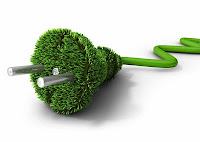This is a fictitious interview with an energy expert that is not afraid of saying things as they really are, rather than as many wish they were.
For the purpose of this exercise, let's say the energy expert is Mr. EE and Global News and World Report is interviewing him.
GNWR: what would be required to drastically reduce humanity's carbon emissions, in other words, what we need to do to prevent a global climate catastrophe?
EE: drastically reduce our fossil fuel use.
GNWR: but, what would be required to drastically reduce our fossil fuel use.
EE: a drastic increase in the prices of fossil fuels. And I want to stress here the word "drastic". Even though there is in general an upward trend in the cost of fossil fuels, if we leave it to "the market" the price increases won't be big enough or arrive soon enough to stop a runaway climate crisis.
GNWR: but, won't people understand the importance of reducing our carbon emissions and modify their behavior accordingly?
EE: maybe one percent or so of the Earth's population will voluntarily take this path but most people won't substantially modify their behavior until overriding economic factors force them to do so. And the words I want to stress here are "force them."
GNWR: can´t we just support wider use of renewables?
EE: Once you factor all the direct and indirect costs, renewables are not only more expensive than fossil fuels, they are vastly more expensive.
GNWR: so, please stop beating around the bush and tell us what exactly needs to be done.
EE: I would like to offer a much more imaginative, innovative, and interesting answer but as we stand today the only viable solution to our carbon problem are carbon taxes. And again, we are not talking about "timid" taxes, but ones that would increase the price of fossil fuels by say, three, four or even five times their current level. This should obviously go hand in hand with the elimination of all subsidies both to fossil fuels and to renewables. Believe it or not, globally we are currently subsidizing fossil fuel consumption to the pitch of more than 500 billion dollars per year!
GNWR: if those carbon taxes were fully implemented, what would be the immediate result?
EE: first, our carbon emissions will truly drop dramatically. This would obviously be a very welcomed result. On the other hand the world economy will tank. This would be a serious side effect, to say the least.
GNWR: why is that so?
EE: today the world economy almost single-handedly depends on cheap fossil fuels. Some analysts even state that the 2008 world recession was REALLY caused (or at least triggered) by $150 dollar oil. The carbon taxes we are envisioning would bring this price to, say, $450. It would be a completely different ball game.
GNWR: but then, isn't the medicine worse than the sickness?
EE: THAT is the crux of the matter. In other words, how do we reduce our emissions fast enough to avert a climate catastrophe while at the same time prevent the destruction of the world's economy in the process.
GNWR: could this conceivably be done?
EE: From a technical point of view, absolutely. The number one source of our carbon emissions is electricity production. In theory, all electricity can be generated with nuclear plants and nuclear produces almost no carbon dioxide during operation. France already produces close to 80% of its electricity with nuclear plants.
GNWR: and renewables?
EE: aside from hydro, renewables have just been a costly diversion. However, if they can survive by themselves without subsidies, then they would stay, but they will always be just a small part of our total energy mix. Even hydro will face problems. Climate change is already impacting countries where hydro is big, such as Brazil which may have to begin rationing electricity as early as this year. Venezuela and Colombia may not be far behind. So let me stress this even if Greenpeace doesn't want to listen: the future will be nuclear. Even Japan is already re-starting its nuclear plants. Germany doesn't have any choice either so sooner or later they will continue investing in nuclear.
GNWR: what else needs to be done?
EE: another big contributor to our carbon emissions is transportation. Here we need much more efficient cars, which at this moment means hybrids, and at the same time much less cars. We have to make public transportation attractive to many people that currently mostly use their car. Also, we need to be more "bicycle friendly".
GNWR: anything more?
EE: yes, efficiency, efficiency, efficiency that will allow us to reduce our consumption of raw materials, energy, land, etc., while at the same time not overly affect our well-being.
GNWR: so then, there is hope!
EE: as mentioned, technically it is completely feasible but the real issues are political and here we can kill ourselves without really trying.
GNWR: Thank you very much, Mr. EE.
EE: you are most certainly welcomed!
Labels: carbon emissions, climate, electricity, nuclear, renewable











